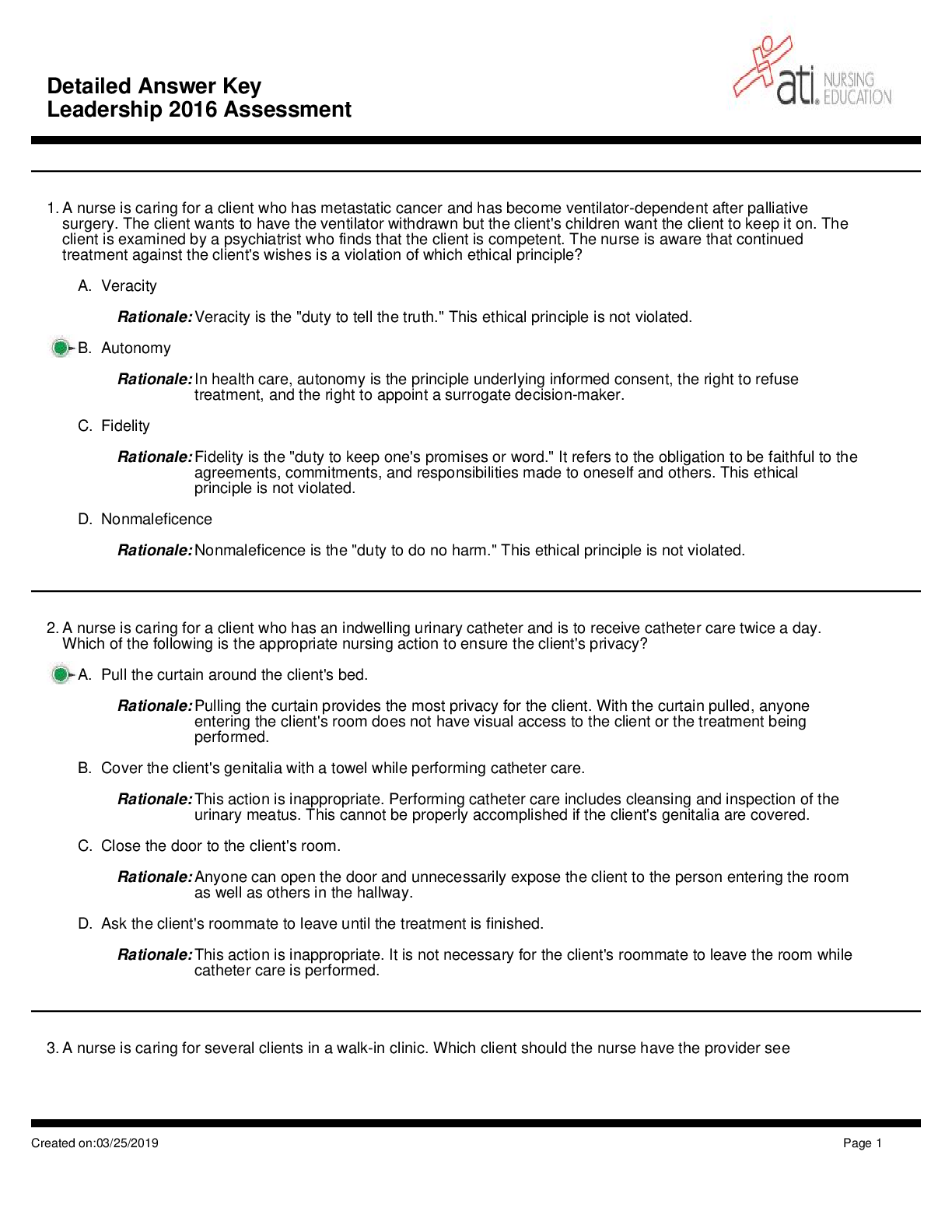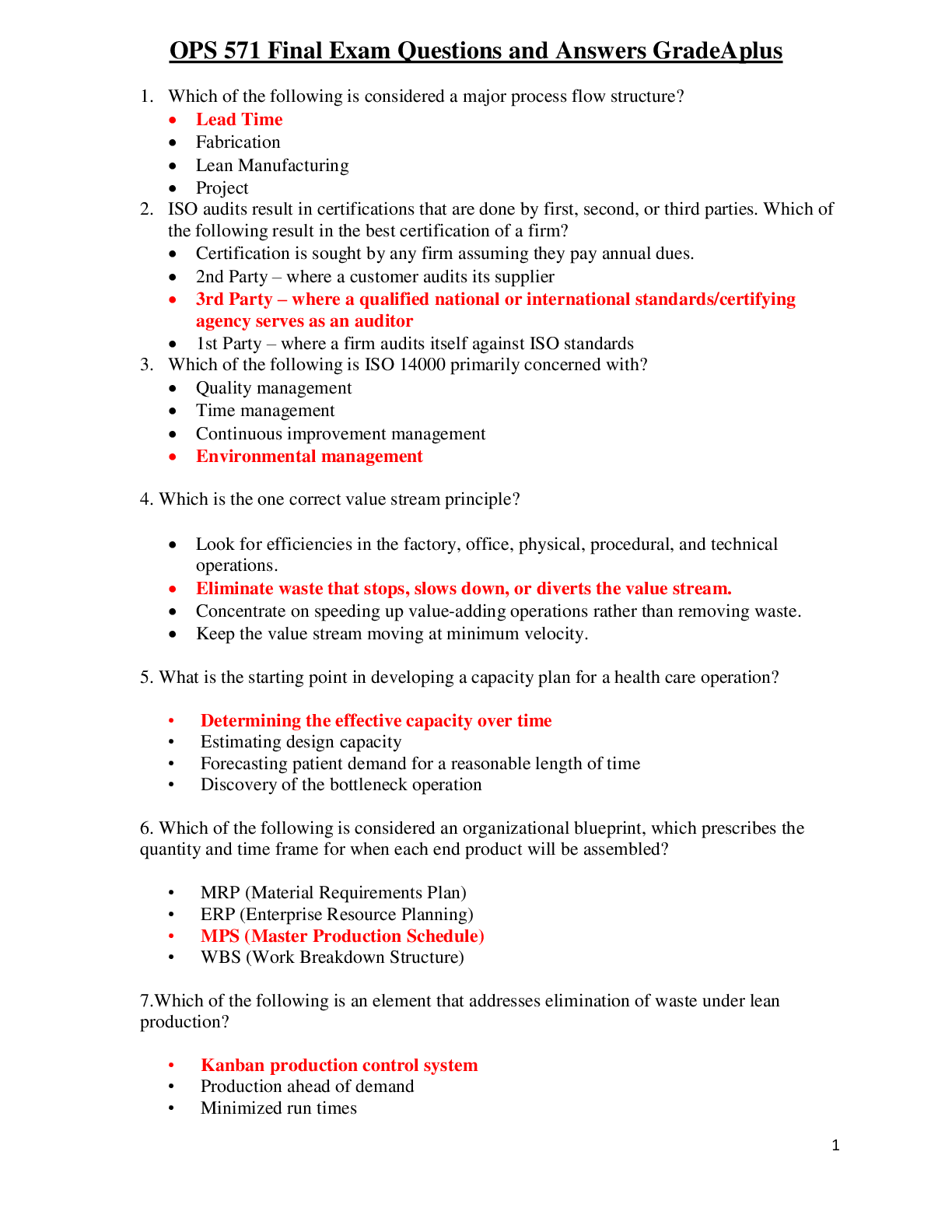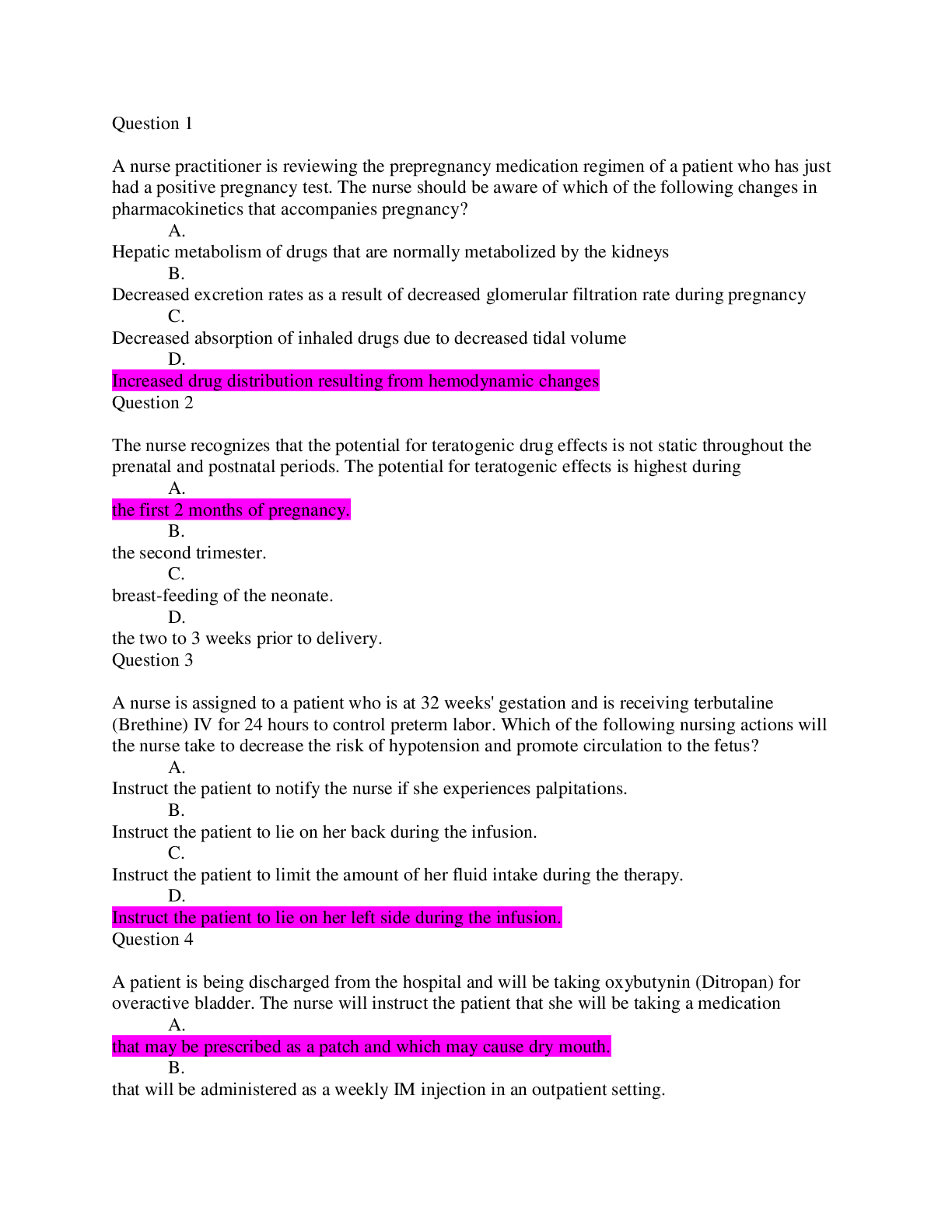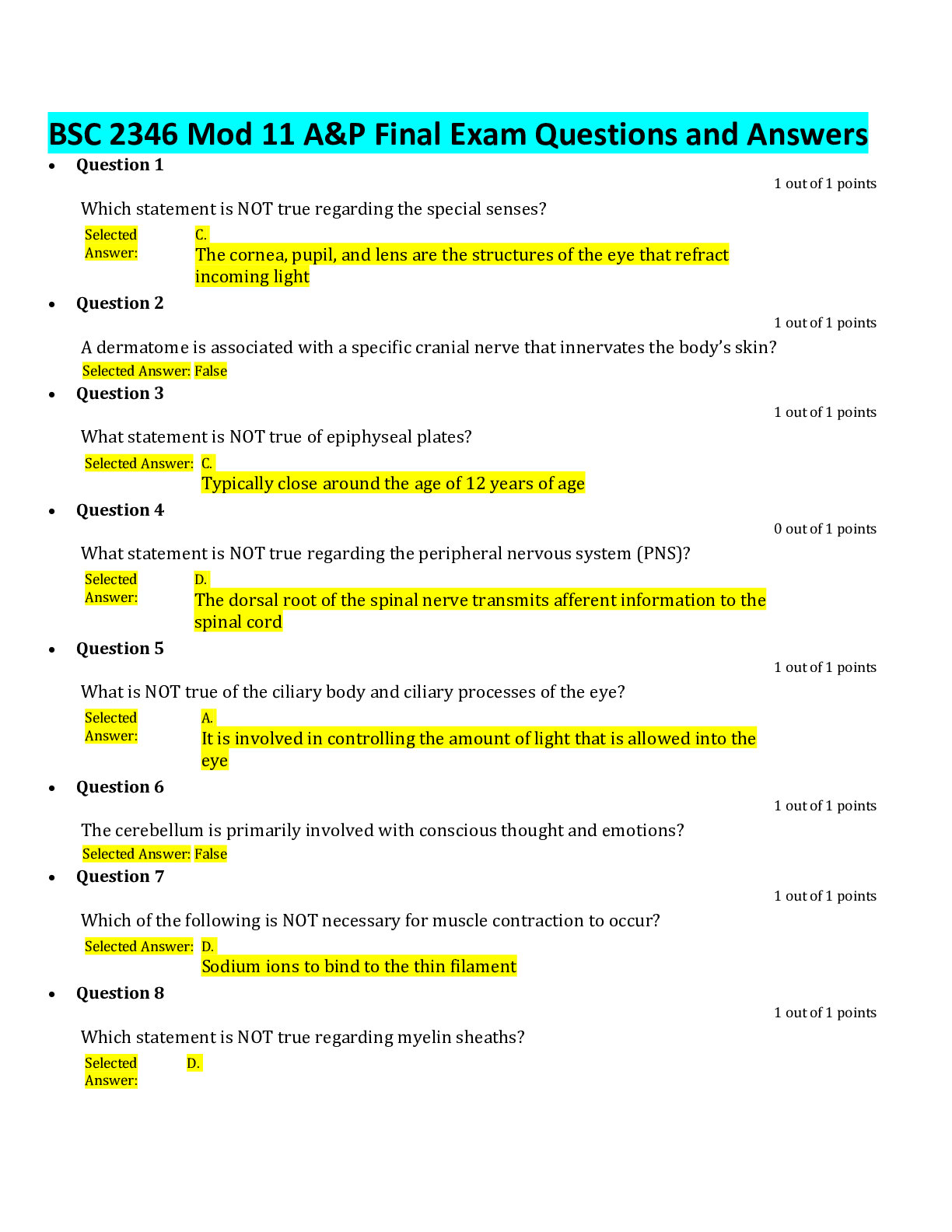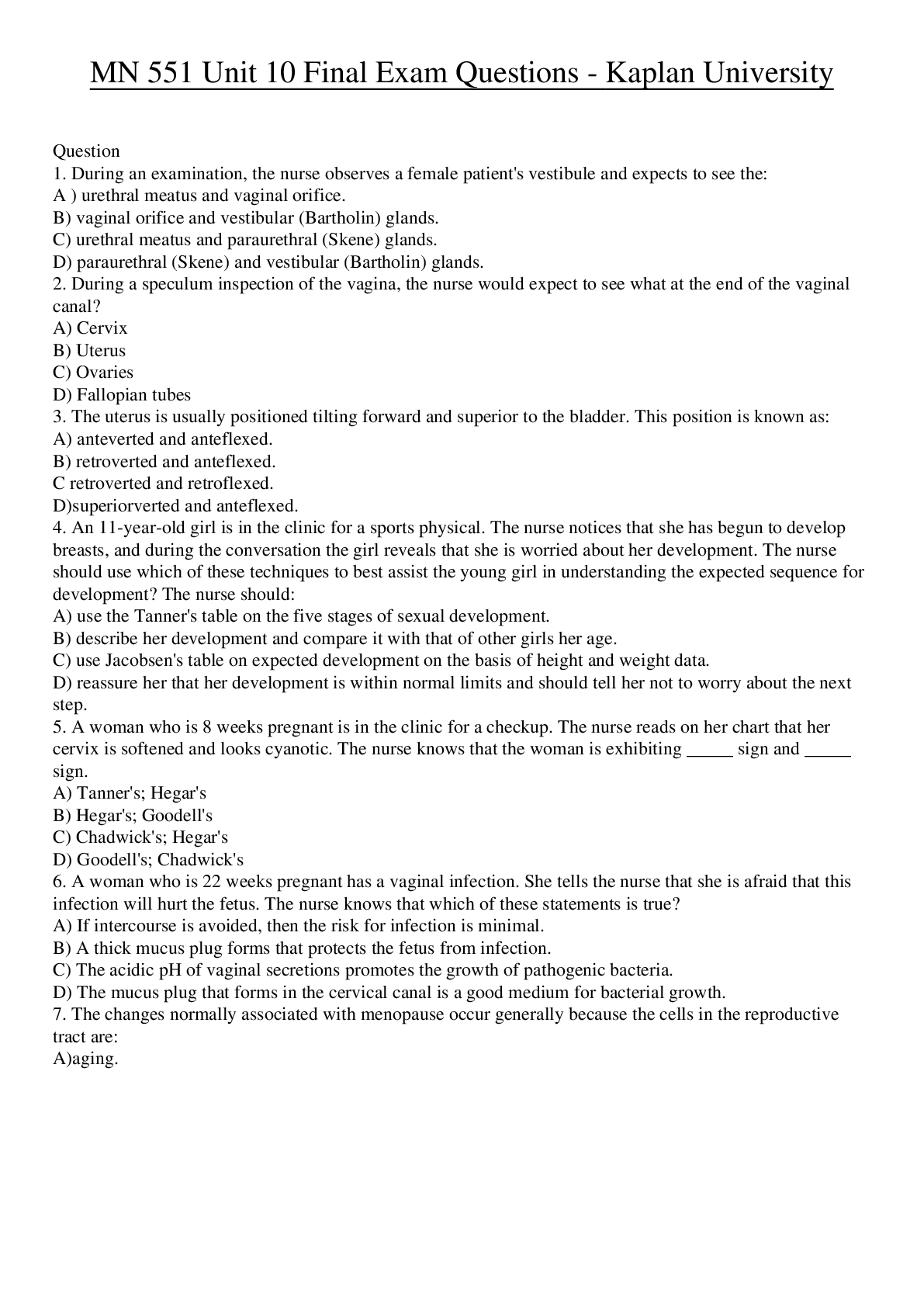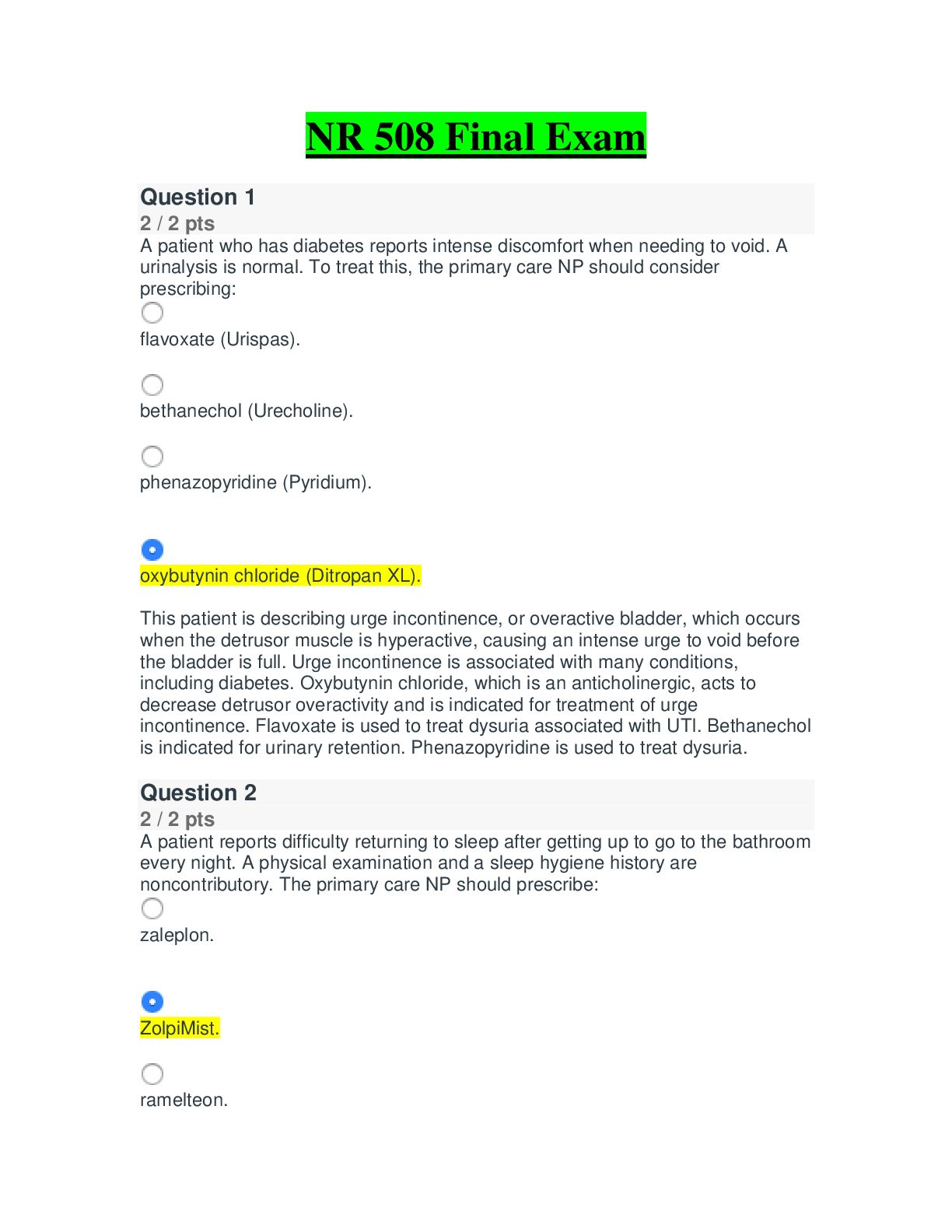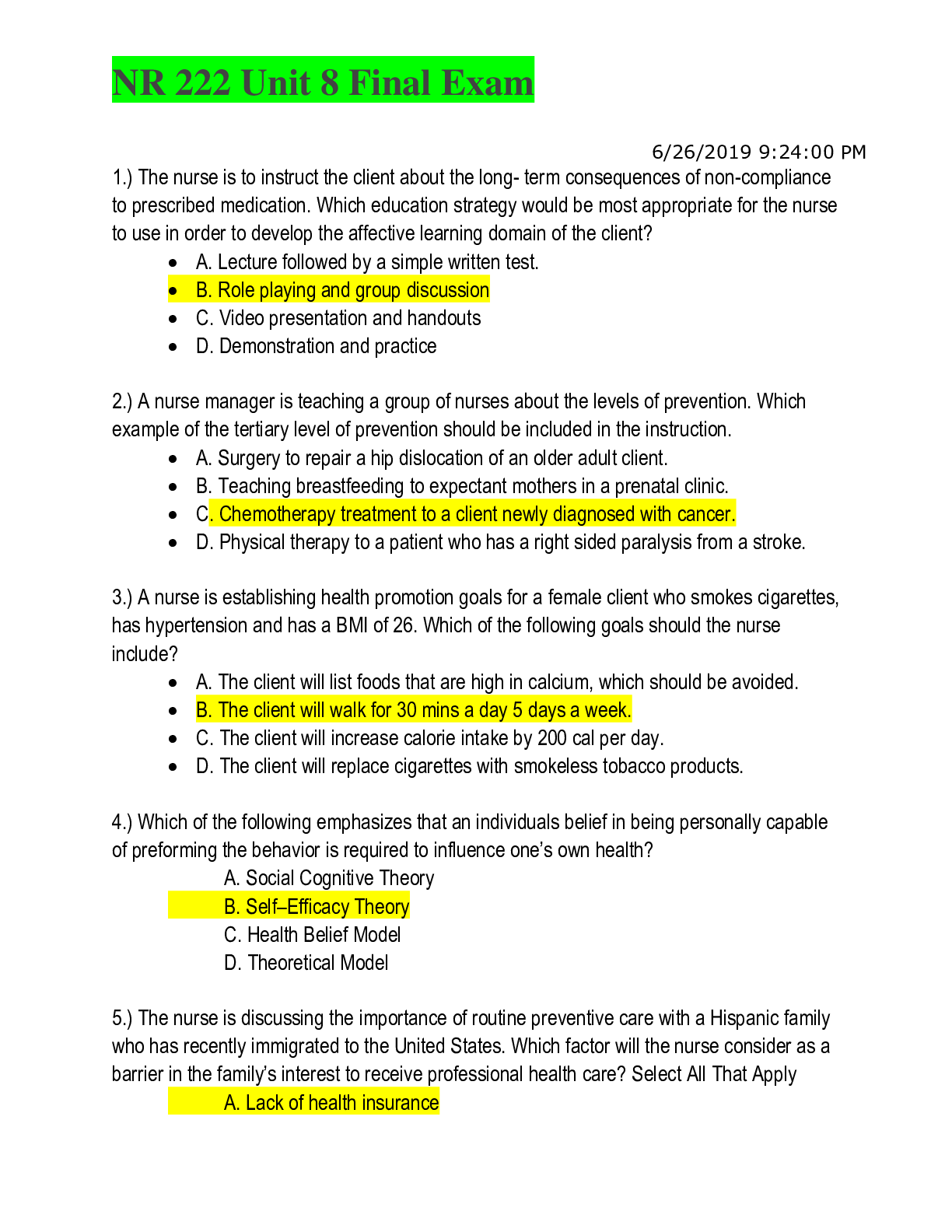Psychology > EXAM > PSY 550 Final Exam Questions and Answers,100% CORRECT (All)
PSY 550 Final Exam Questions and Answers,100% CORRECT
Document Content and Description Below
For each of the following examples, explain whether the researcher has made a correct decision or has made a Type 1 or Type 2 error. Explain why. Dr. G rejects the null hypothesis although the indep... endent variable had no effect. Dr. R rejects the null hypothesis when it is false. Although the independent variable had an effect, Dr. E does not reject the null hypothesis 1. Dr. G rejects the null hypothesis although the independent variable had no effect. This problem would be a type I error because there is no proof that shows that the null hypothesis was false. A Type I error is made when the null hypothesis is true and is rejected. Dr. G rejected the null hypothesis without completely knowing if the null hypothesis is false. 2. Dr. R rejects the null hypothesis when it is false. This would be a corrected decision. Again, we reject the null hypothesis if it is false and that is what happened in this scenario. 3. Although the independent variable had an effect, Dr. E does not reject the null hypothesis. This is a Type II error. A type II error happens as a type of false positive. Meaning, that Dr. E failed to reject a null hypothesis that is actually false. Explain the value of reversal designs (ABA designs) in single-case research. This type of research can be extremely helpful. For example, reversal designs in single-case research allows researchers to obtain repeated measures. In this type of design, the researcher tries to verify the effects of the independent variable by "reversing" the roles. This causes more consistency within the study and is accurately measured under controlled conditions. This reduces types of errors as well. Explain how a one-way analysis of variance works. How do you use between- and within-group variability? A one-way analysis of variance is used when trying to understand if there are any significant differences between the means of three (or more) independent groups. Between group variability is used to understand the differences among different groups. For example, we may be determining how groups are different from one another. In between group variability, it includes two or more groups. Within-group variability shows the differences among members that are a part of the same group. After watching nursery-school children, Ken Garoo wants to test the hypothesis that some toys are more fun to play with than others. He decides to compare “fun” toys (blocks) with “unfun” toys (stuffed animals). He also wishes to see if there is a sex difference, as well, so sex is added as an independent variable. A) What kind of design is needed? B) Diagram it out. C) Assuming 20 subjects are needed per cell, how many subjects are needed for this study? A) The type of design needed in this study would be a 2x2 factorial design. This type of design is needed because we will be able to test the factors within one sample. Also in this design, we can test all possible combinations between one another. For example, fun toys with males and fun toys with females, or unfun toys with females and unfun toys with males. B) Fun toys Unfun toys Male 20 20 Female 20 20 C) Assuming there are 20 subjects needed per cell, there would need to be 80 subjects for this study. 20 + 20 + 20 + 20 = 80 Bill Board is “lording” his SAT score over his friend, Rhoda Dendron, who took the ACT. “You only got a 25 in math,” he chortled, “while I got a 300 in math.” Given that the SAT has a μ of 500 and a σ of 100, and the ACT has a μ of 20 and a σ of 5, what is wrong with Bill’s logic (give the answer in both z scores and percentile ranks). Bills logic is wrong because the scoring for the ACT and the scoring for the SAT are completely different and cannot be compared to one another. Here is breakdown in percentile ranks and z scores: 300/800 in SAT Math = 37.5% 25/36 ACT Math = 69% z=x−μ / standard deviation Rhoda z: 25-20/5 = 1 Bill z: 300-500/100 = -2 Given the percentages and the z scores, Rhoda actually scored higher than Bill. Rhoda is closer to the average given her z score of 1 when compared to Bill's z score of -2. Rhoda's score is closer to zero, making it closer to the average score. These scores cannot be compared to one another because they have a different scoring system. Just because Bill's score was higher, does not mean that he scored higher than Rhoda. Describe a two-matched groups design. How is the matching done? A two-matched groups design is when subjects are matched because of a certain variable. Matching is almost always done by looking at a variable that may impact or effect the dependent variable in some way. After matching depending on the variable, they are then split into two or more groups. Matching is typically done to create equal groups for a research study. Also, these groups typically have a control group and an experimental group. Chuck Wagon is very excited about the within-subjects approach. “Now I’ll never need to run large numbers of subjects again,” he says. However, Chuck has forgotten that within-subjects designs may be a) useless, b) impossible, c) confounded by order effects, or d) impractical when excessive subject time spent in an experiment makes data inaccurate. Give an example of each of these four objections. a) Useless: An example of this could be the effects of a new drug over a long period of time. b) Impossible: An example of this could be testing a drug and comparing it to a surgical procedure. c) Confounded by order effects: An example of this could be when a drug and placebo are compared to one another. In this scenario, the researcher would aim to understand whether the drug works or if it was a placebo effect. d) Impractical when excessive subject time spent in an experiment makes data inaccurate: An example of this happens a lot. Some study’s and experiments take a lot of time. If a researcher extends a lot of time for a study and it takes too long, new information may be found. Making the results and data inaccurate. A researcher has studied subjects’ ability to learn to translate words into Morse code. He has experimented with two treatment conditions: in one condition, the subjects are given massed practice; they spend 8 full hours on the task. In the other condition, subjects are given distributed practice; they also spend 8 hours, but their practice is spread over four days, practicing 2 hours at a time. After the practice, all subjects are given a test message to encode; the dependent variable is the number of errors made. The researcher has matched the subjects on intelligence. The results are in the following table. Decide which statistical test would be appropriate, carry out the test, and evaluate the outcome. Assume a significance level of .05 and that the direction of the outcome has not been predicted. The statistical test the would be appropriate given this data would be a paired t test. The equation for this test would be: t= ((∑▒〖D )/N〗)/√((∑▒D^2-((∑▒D)^2/N))/((N-1)(N))) t= -1.581139 or-1.58 The value of p would be 0.189004 or 0.19 Given the significant level of .05, the result would not be statistically significant. Explain the pros and cons of: Longitudinal study = Pros: May find other relationships between variables, they are very flexible and are accurate when compared to other studies, large amounts of data can be collected. And patterns between variables can be clearly identified. Cons: A lot of time is required, subjects may drop out of the study over time, the cost of the experiment can be expensive, and larger sample sizes are often needed. Cross-sectional = Pros: They are often cost effective and affordable, there can be multiple outcomes, good for descriptive analyses. Cons: Only successful when the sample represents an entire population, unable to measure incidence, associations may be difficult to understand, and may be susceptible to biases like interviewer bias and/or responder bias. Sequential designs= Pros: Measures and observes changes more accurately when compared to other designs, able to test a single variable on the same individual over a longer period of time, culture and demographic factors are able to be eliminated. Cons: Participant mortality can be an issue, the results that the study ends with may be different than what was anticipated due to the change in the participants/subjects, and poor causational analysis. Define the term quasi-experiment and discuss the pros and cons of this research method. [Show More]
Last updated: 1 year ago
Preview 1 out of 4 pages
Instant download
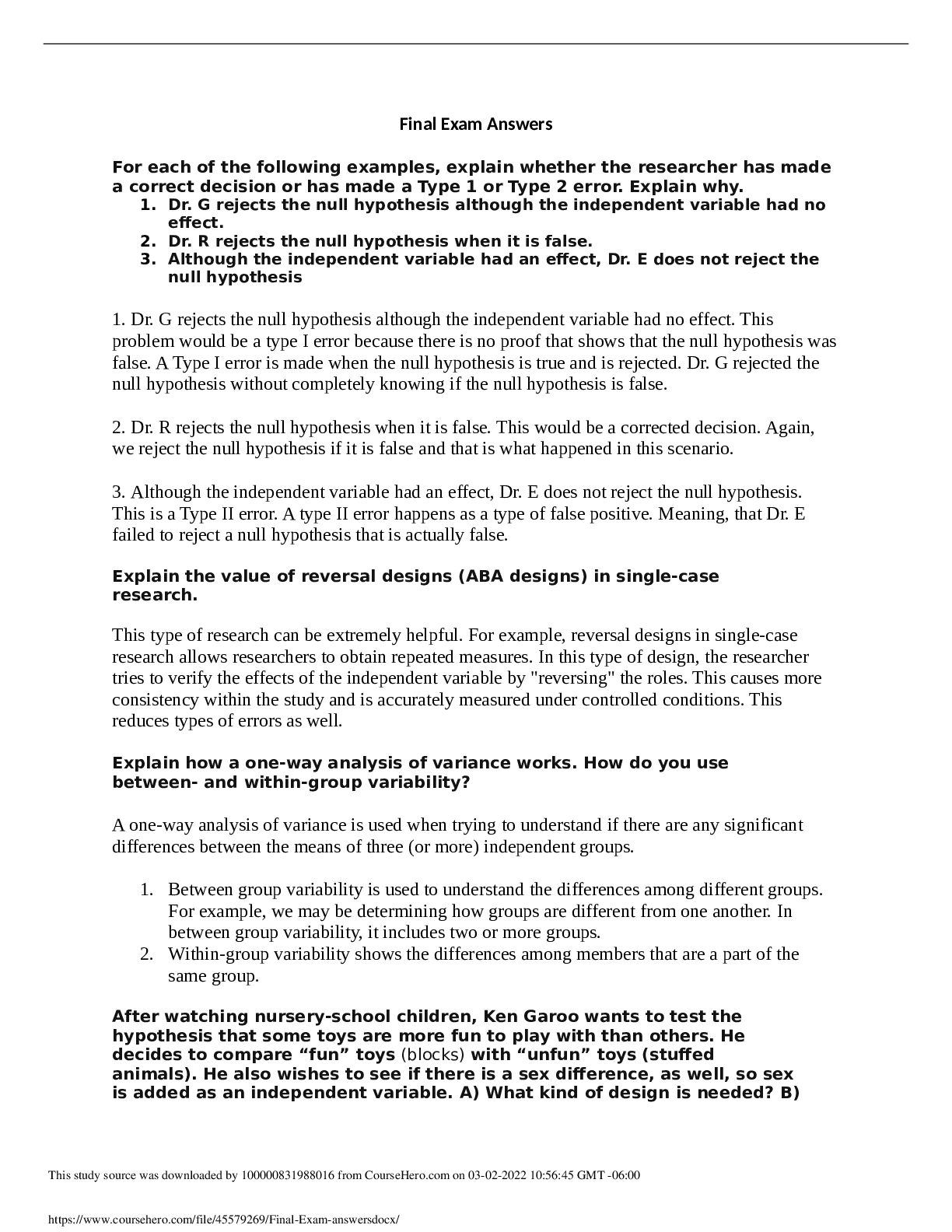
Buy this document to get the full access instantly
Instant Download Access after purchase
Add to cartInstant download
Reviews( 0 )
Document information
Connected school, study & course
About the document
Uploaded On
Feb 06, 2021
Number of pages
4
Written in
Additional information
This document has been written for:
Uploaded
Feb 06, 2021
Downloads
0
Views
47













